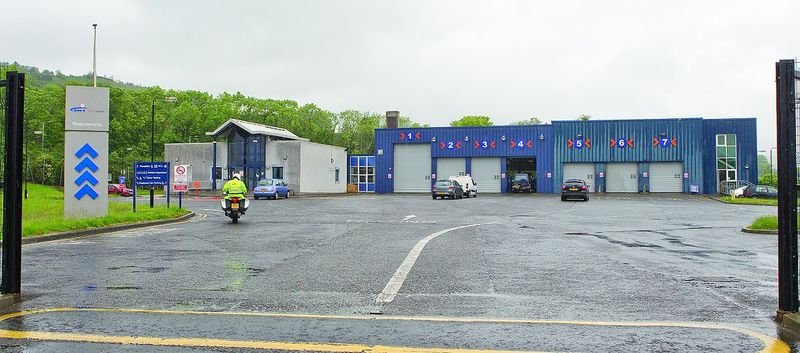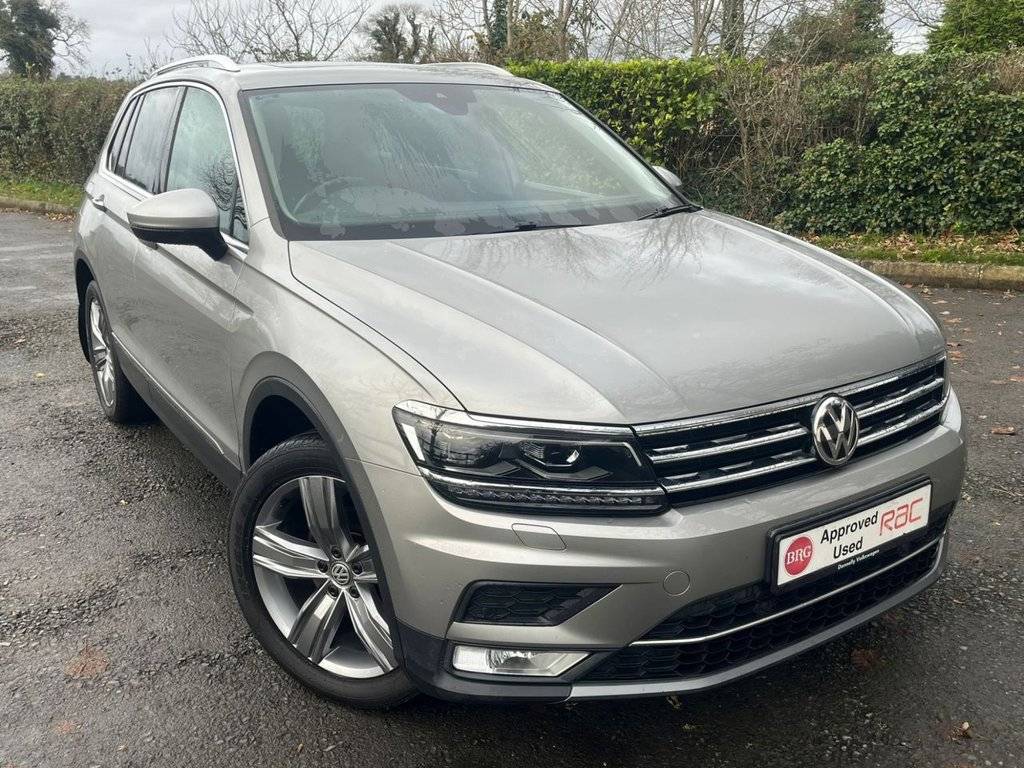The Newtownards driving test centre, located in County Down, is one of Northern Ireland’s 17 test centres managed by the Driver & Vehicle Agency (DVA). Known for its mix of urban, suburban, and semi-rural roads, Newtownards offers a diverse testing environment that challenges learners with varied road conditions and traffic scenarios. This blog post provides an in-depth look at a typical driving test route in Newtownards, including a detailed route description, specific areas to watch out for, preparation tips, and resources to help you pass your practical driving test.
Overview of the Newtownards Test Centre
Location: Newtownards Driving Test Centre, 42 Portaferry Road, Newtownards, BT23 8NN.
Environment: Situated in a moderately busy town, the test centre serves a mix of urban roads, residential estates, and semi-rural stretches, with nearby access to major roads like the A21 and A20.
Test Duration: Approximately 40 minutes, including an eyesight check, two ‘Show Me, Tell Me’ questions, general driving, one reversing manoeuvre, and about 10 minutes of independent driving.
Waiting Times: Typically 5–7 weeks, though checking for cancellations on the DVA website (nidirect.gov.uk) or calling 0300 200 7862 can secure earlier slots.
Pass Rate: Around 55–60%, slightly above the Northern Ireland average, due to less intense traffic compared to Belfast but with challenges like roundabouts and narrow estate roads.
This guide focuses on a commonly used test route in Newtownards, based on local instructor knowledge and resources like the Northern Ireland Test Routes App and testroutesni.co.uk. While routes vary to prevent memorization, this example reflects typical roads and challenges you’re likely to encounter.
Detailed Newtownards Test Route Description
The following is a sample test route starting and ending at the Newtownards Test Centre on Portaferry Road. This route covers approximately 8–10 miles, includes a mix of road types, and incorporates common test elements like roundabouts, residential areas, and independent driving. The description highlights specific roads, junctions, and potential hazards to help you prepare.
Starting Point: Newtownards Test Centre (Portaferry Road)
Exit the Test Centre: Begin by turning left out of the test centre onto Portaferry Road (A20). This is a busy two-lane road with a 30 mph speed limit. Watch for oncoming traffic and ensure clear signaling to merge safely.
Key Hazard: The immediate left turn requires precise observation due to frequent traffic from both directions, especially during morning or evening commutes. Check mirrors and blind spots carefully.
Stage 1: Portaferry Road to Comber Road (A21)
Route: Continue straight on Portaferry Road for about 0.5 miles, passing residential areas and small businesses. At the large Portaferry Road Roundabout (junction with Jubilee Road and Comber Road), take the second exit onto Comber Road (A21) toward Comber.
Road Characteristics: Portaferry Road is a wide urban road with cycle lanes and pedestrian crossings. Comber Road is a dual carriageway with a 40 mph speed limit, featuring two lanes in each direction.
Hazards:
Portaferry Road Roundabout: This five-exit roundabout is busy, with traffic from Belfast, Bangor, and local estates. Ensure correct lane discipline (left lane for Comber) and yield to traffic from the right. Hesitation or incorrect signaling can result in a minor fault.
Pedestrian Crossings: Near the roundabout, watch for pedestrians, especially near bus stops or the nearby Ards Shopping Centre.
Lane Changes on Comber Road: Maintain the left lane unless overtaking, as the right lane is for faster traffic or turns. Check mirrors before merging.
Tips: Practice navigating large roundabouts, focusing on lane choice and smooth acceleration. Use the Northern Ireland Test Routes App to simulate this section.
Stage 2: Comber Road to Movilla Road (Residential Area)
Route: Drive 1 mile on Comber Road, then turn left onto Movilla Road at the traffic lights (junction with Movilla Road and Donaghadee Road). Follow Movilla Road into the Movilla estate for about 0.7 miles.
Road Characteristics: Comber Road is a straight dual carriageway with occasional traffic lights. Movilla Road narrows to a single-lane residential road (30 mph) with parked cars, speed bumps, and cul-de-sacs.
Hazards:
Traffic Lights: The junction at Movilla Road requires quick decision-making, as lights change rapidly. Be prepared to stop or proceed smoothly.
Narrow Roads in Movilla Estate: Movilla Road has parked cars on both sides, reducing width. Watch for oncoming vehicles and pedestrians, especially children playing near estates.
Speed Bumps: Maintain a steady 15–20 mph over speed bumps to avoid jolting the vehicle, which could be marked as a control fault.
Manoeuvre Opportunity: Examiners often use Movilla estate for a reversing manoeuvre, such as parallel parking between parked cars or a reverse around a corner at a quiet junction like Movilla Drive. Practice precise steering and clutch control here.
Tips: Drive through Movilla estate during lessons to get comfortable with tight spaces. Practice parallel parking between real cars to simulate test conditions.
Stage 3: Independent Driving (Movilla Road to Donaghadee Road)
Route: Exit Movilla estate by turning right onto Donaghadee Road (A48) at the traffic lights. For independent driving (about 10 minutes), the examiner may ask you to follow signs toward Donaghadee or return to Newtownards town centre. Continue on Donaghadee Road for 1.5 miles, then turn left onto Bowtown Road.
Road Characteristics: Donaghadee Road is a single-lane road with a 30 mph limit, widening to 40 mph in less built-up areas. Bowtown Road is a narrow residential street with a 30 mph limit and frequent parked cars.
Hazards:
Independent Driving: You may need to follow signs to Donaghadee (A48) or interpret a sequence of directions (e.g., “At the next roundabout, take the second exit, then turn left at the lights”). Missing a sign won’t fail you, but committing a fault (e.g., wrong lane) will.
Donaghadee Road Junctions: Watch for vehicles pulling out from side roads like Crawfordsburn Road. Use mirrors and signal early.
Bowtown Road: Narrow sections and parked cars require slow speeds (15–20 mph) and careful observation for pedestrians or cyclists.
Tips: Practice reading road signs in Newtownards, focusing on destinations like Donaghadee or Bangor. Memorize short direction sequences to build confidence for independent driving.
Stage 4: Bowtown Road to Belfast Road (A20)
Route: Follow Bowtown Road for 0.5 miles, then turn right onto Belfast Road (A20) at the mini-roundabout. Continue on Belfast Road for 1.2 miles toward Newtownards town centre.
Road Characteristics: Bowtown Road is tight with speed bumps and parked cars. Belfast Road is a wider urban road (30 mph) with shops, pedestrian crossings, and bus stops.
Hazards:
Mini-Roundabout: The Bowtown Road/Belfast Road junction is small but busy. Yield to traffic from the right and signal clearly.
Pedestrian Crossings on Belfast Road: Near the town centre, expect frequent pedestrians, especially near shops or the Ards Hospital. Stop promptly at zebra crossings.
Bus Lanes: Belfast Road has bus lanes in some sections. Stay out unless permitted, and watch for buses pulling out.
Tips: Practice mini-roundabout navigation, focusing on quick observation and signaling. Drive Belfast Road during lessons to anticipate pedestrian activity.
Stage 5: Belfast Road to Return to Test Centre
Route: From Belfast Road, turn left onto Church Street at the traffic lights, then right onto Portaferry Road (A20). Follow Portaferry Road for 0.8 miles, passing the Portaferry Road Roundabout (first exit), and return to the test centre.
Road Characteristics: Church Street is a narrow urban road (30 mph) with shops and parked cars. Portaferry Road leads back to the test centre via the busy roundabout.
Hazards:
Church Street: Tight with frequent pedestrians and delivery vehicles. Maintain a steady 20–25 mph and watch for vehicles pulling out.
Portaferry Road Roundabout (Return): Take the first exit to stay on Portaferry Road. Ensure correct lane discipline (left lane) and yield to traffic.
Test Centre Re-Entry: The right turn into the test centre is tight. Slow down, check for oncoming traffic, and signal early to avoid hesitation faults.
Emergency Stop (if applicable): Examiners may request an emergency stop on quieter sections like Church Street or a straight part of Portaferry Road. Practice controlled stops with quick reactions.
Tips: Rehearse the return to the test centre, focusing on the tight right turn. Practice emergency stops in a safe area to ensure smooth control.
Specific Areas to Be Careful On
Portaferry Road Roundabout:
Why It’s Tricky: Multiple exits, heavy traffic, and fast-moving vehicles from Belfast or Bangor.
How to Prepare: Practice large roundabouts in lessons, focusing on lane discipline (left lane for Comber, first exit for return). Use mirrors and signal early to avoid cutting off other drivers.
Movilla Estate:
Why It’s Tricky: Narrow roads, parked cars, and speed bumps test your control and observation. Manoeuvres like parallel parking are common here.
How to Prepare: Practice in similar estates, focusing on clutch control and checking blind spots. Use the Test Routes App to identify manoeuvre spots.
Donaghadee Road (Independent Driving):
Why It’s Tricky: Following signs or verbal directions requires confidence and quick decision-making. Side roads and cyclists add complexity.
How to Prepare: Drive Donaghadee Road with an instructor, practicing sign-reading to Donaghadee or Bangor. Memorize short direction sequences.
Belfast Road Pedestrian Crossings:
Why It’s Tricky: Frequent pedestrians near shops and the hospital demand constant awareness. Failing to stop at a crossing is a serious fault.
How to Prepare: Practice urban driving with heavy pedestrian activity. Anticipate crossings by scanning ahead.
Test Centre Re-Entry:
Why It’s Tricky: The tight right turn into the test centre can catch nervous candidates off guard, especially with oncoming traffic.
How to Prepare: Rehearse the turn during lessons, slowing to 10–15 mph and checking mirrors thoroughly.
Preparation Tips Specific to Newtownards
Use the Northern Ireland Test Routes App:
Download from Google Play or Apple Store (£9.99) for GPS-guided Newtownards routes. The app highlights this route’s key sections, including the Portaferry Road Roundabout and Movilla estate manoeuvre spots.
Practice with the app’s turn-by-turn navigation to build familiarity with road signs and junctions.
Book Lessons with a Local ADI:
Choose an Approved Driving Instructor familiar with Newtownards routes. They can guide you through specific hazards like the Portaferry Road Roundabout and Movilla estate.
Request an observer (instructor or friend) for the test to provide feedback, as allowed by DVA rules.
Practice During Peak Times:
Drive the route during morning (8–10 AM) or evening (4–6 PM) commutes to experience rush-hour traffic on Portaferry Road and Belfast Road.
Practice near schools (e.g., near Movilla High School) to anticipate pedestrians during pick-up times.
Master Manoeuvres:
Use Movilla estate or similar areas to practice parallel parking and reversing around corners. Focus on reference points (e.g., aligning with a parked car’s rear bumper) and consistent observation.
Practice bay parking in the test centre car park, as some tests begin or end with this manoeuvre.
Prepare for ‘Show Me, Tell Me’ Questions:
Study the 14 DVA vehicle safety questions (available on nidirect.gov.uk or lcdrivingacademy.com). For example, know how to check brake fluid or demonstrate windscreen washer operation.
Incorrect answers add one minor fault each, so practice both showing and explaining checks.
Check Vehicle Requirements:
Ensure your car (or instructor’s car, e.g., Citroën C3 2009–2019) has valid tax, MOT (if required), L-plates, and no outstanding recalls. Examiners check this before the test.
Practice in the test vehicle to feel comfortable with its controls, especially for clutch-intensive manoeuvres.
Manage Test Day Nerves:
Arrive 10 minutes early at the test centre to settle in. Bring your provisional license and theory test certificate.
During independent driving, ask for clarification if unsure about directions. Stay calm and focus on safe driving rather than perfect route adherence.
Additional Resources
Northern Ireland Test Routes App: Provides detailed Newtownards routes with GPS navigation and manoeuvre locations (£9.99, Google Play/Apple Store).
TestRoutesNI.co.uk: Offers route insights and tips for Newtownards, including common roads like Comber Road and Movilla Road.
DVA Website (nidirect.gov.uk): Book tests, check waiting times, and access ‘Show Me, Tell Me’ questions. Call 0300 200 7862 for cancellations.
LCD Driving Academy: Lists vehicle safety questions and preparation tips, including observer options for tests.
Vrooom Driving Lessons: Provides local instructor insights on Newtownards routes, emphasizing roundabouts and residential areas.
Passing your driving test in Newtownards requires thorough preparation and familiarity with the local roads and challenges. This sample route, covering Portaferry Road, Comber Road, Movilla estate, Donaghadee Road, and Belfast Road, reflects the diverse conditions you’ll face, from busy roundabouts to tight residential streets. By practicing with the Northern Ireland Test Routes App, working with a local instructor, and focusing on key hazards like the Portaferry Road Roundabout and pedestrian crossings, you can build the skills and confidence needed to succeed. Book early, check for cancellations, and drive safely to earn your full driving license in Newtownards.
Best of luck on your test!









